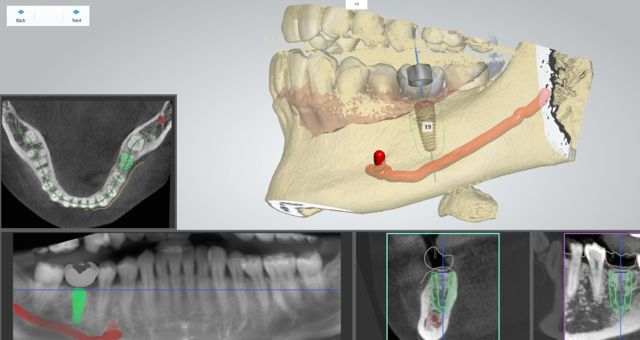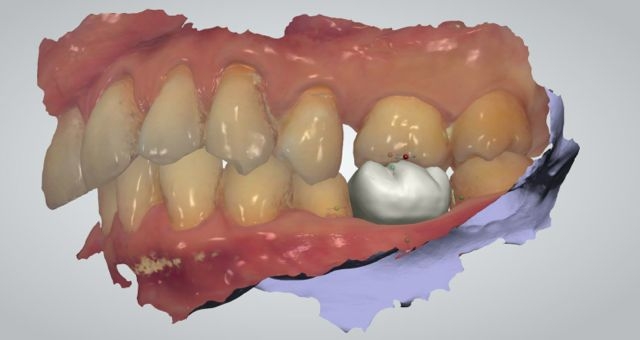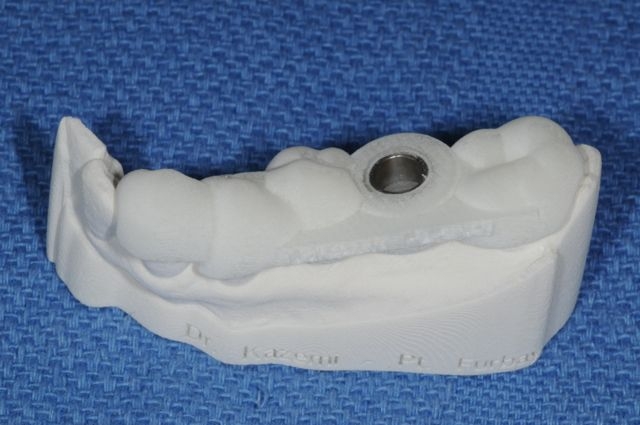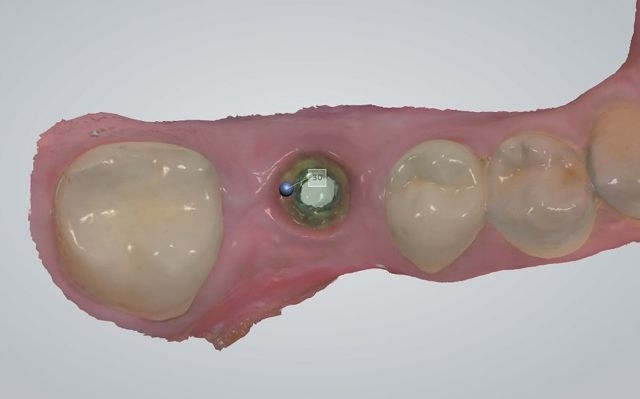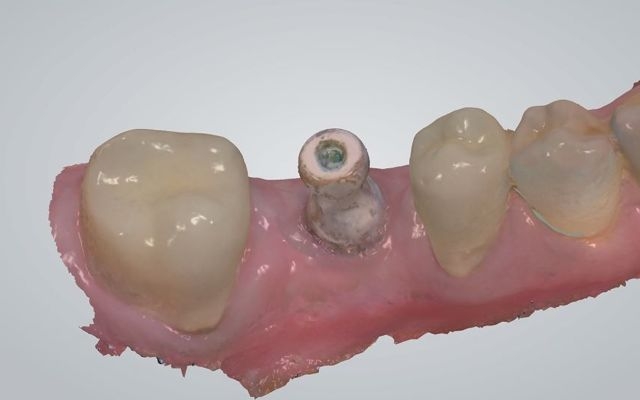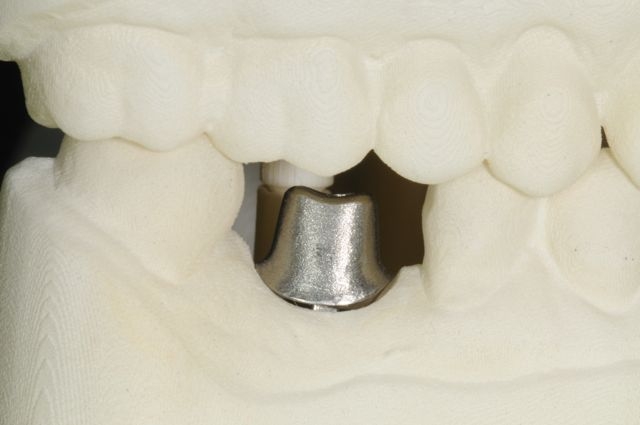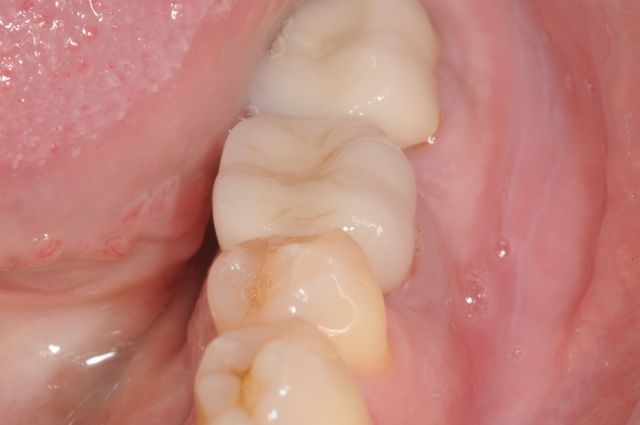
Why Replace Missing Teeth?
Missing teeth should always be replaced to avoid the following consequences:
Loss of chewing function:
Losing teeth significantly affects your ability to chew and eat your favorite foods. Often, people change to softer diet or avoid chewing on one side or the other to compensate for this loss.
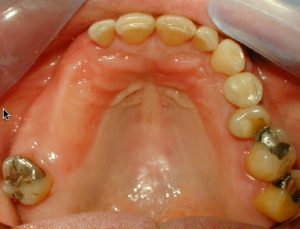
Poor aesthetics and smile:
Tooth loss, especially in the upper front area of your mouth also known as the smile or aesthetic zone, compromises your smile. People with missing teeth or aesthetically unpleasing teeth often cover their mouth when talking or smiling. It can also affect one’s speaking.
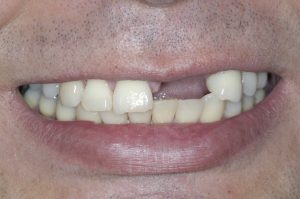
Damage to adjacent teeth:
Following teeth loss, the remaining teeth have to carry the ‘load’ during your chewing. The excessive forces can result in chipping, fractures, or potential gum disease with loss of bone. Once the bite has been compromised by tooth loss, it becomes increasingly worse as the other teeth suffer such damage and begin to shift.
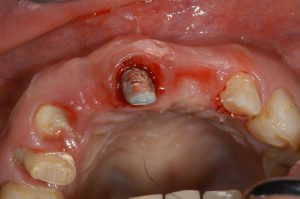
Bone loss:
Following tooth loss, the supporting jaw bone undergoes significant remodeling and shrinkage. This will result in defects that are unsightly, difficult to clean, and difficult to correct later. This can easily be prevented by replacing the missing teeth with implants early.
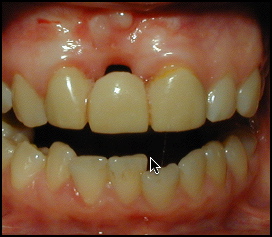
Shifting of other teeth
Tooth loss causes shifting or moving of adjacent and opposing teeth. The back teeth begin to tilt forward and the opposing teeth start shifting up or down. All of this results in malocclusion (poor bite), increase in teeth fractures and increased bone loss (periodontal disease). Once teeth have shifted, correction is difficult and costly. It is best to replace missing teeth before such changes occur.
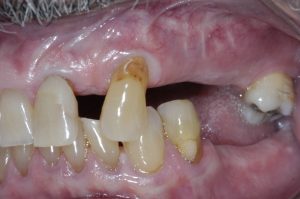
Loss of facial balance and support:
Loss of many teeth in the back results in ‘bite collapse’. The jaw then over closes putting more pressure on the front teeth causing them to flare out. Facial wrinkles develop around the mouth and the lips start to pouch outward (This is the classic tooth-less aging person look). Some people also begin to develop facial pain and TMJ problems. These are serious permanent changes which can be easily prevented by replacing missing teeth in a timely fashion.

Loss of self-esteem and social comfort:
Having a healthy mouth and nice smile greatly contributes to one’s sense of self-esteem and comfort in social settings. We have met many patients whose lives greatly suffered from oral health negligence. Overall quality of life is enhanced with replacement of teeth that look, feel and function like natural teeth.

Why Dental Implants
Whether you are replacing a tooth that is already missing or needs to be extracted, or replacing an old defective bridge, dental implants offer the only viable option for long term success.
Why Dental Bridges are not Recommended:
Conventional dental bridges are not recommended for replacement of missing teeth due to many associated problems, relatively short life-span, and irreversible damage to the teeth holding them.
- Cost difference between a dental bridge and dental implant.
- Six reasons why your dentist may recommend a bridge over dental implants.
Documented Success of Dental Implants:
- Implants are generally 96-98% successful for periods of up to 40+ years. The variations are a result of several factors, including the type of implant, age of the patient, health of the patient, and whether or not the implant is placed in a “compromised” site (e.g. very little bone)
- Recent research indicates that replacing a missing tooth with an implant-supported crown provides benefits for the adjacent natural teeth.
- Success rates for implants do not decrease over time. Compare this to the success rate for bridges, which decreases steadily after 10 years. In fact at 15 years one to three bridges typically fail.
- If more than one tooth is missing, the bridge “span” is longer – and will have an even lower success rate.
Regain Tooth’s Natural Feeling and Appearance:
By replacing the entire tooth, including the root, it is possible to replicate the function of natural teeth, with a strong, stable foundation that allows comfortable biting and chewing. In addition, nothing in the mouth looks or feels artificial.
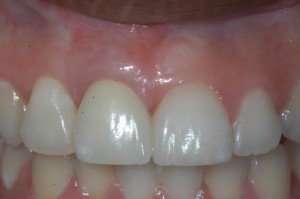
Preserve Facial Harmony:
Implants preserve the integrity of facial structures. By preventing the bone resorption that would normally occur with the loss of teeth, the facial structures remain intact. This is particularly important when all of the teeth are missing, as the lower one-third of the face collapses if implants are not placed to preserve the bone.
Smile:
Preserving Health of Adjacent Teeth:
Better Quality of Life:
Better Oral Hygiene:
It is much easier to care for an implant supported crown, which can be cleaned like a natural tooth. In comparison, a tooth-supported bridge requires the use of a floss threader for proper cleaning. It is also more convenient to clean a full set of implant supported replacement teeth than a traditional denture.
Improved Appearance:
Restored Self-Esteem & Renewed Self-Confidence:
Improved Ability to Eat and Taste Foods:
Wearing an upper denture can prevent someone from really tasting food, as the roof of the mouth is covered. With implant supported replacement teeth, it is not necessary to cover the roof of the mouth, so it is possible to enjoy the taste of foods.
Dental Implants Safety:
Are Dental Implants Right For Me?
Age Limits for Implants:
Dental implants should not be done until the patient has completed their growth, typically age 16 to 17 in females and 18 to 21 in males. Some older patients fear their jaw bone is too weak. The fact is dental implants are equally successful and have an excellent prognosis in any adult patient. No one is too old for dental implants, and for many, improvement in chewing and aesthetics adds confidence and quality to their lives. Implants have been done successfully in patients over 85 years old.
Implants in Patients with Osteoporosis:
Osteoporosis does not affect the health of the jaw bone, and dental implants are equally effective and successful.
Can Dental Implants be Rejected?
Rejection does not occur with dental implants. Our overall success rate for dental implants is 99% with almost 50 years of clinical research to back them up. Because implants are made of biologically compatible “bone-friendly” titanium material, they naturally heal and integrate with the surrounding tissues.
What if I Don’t Have Enough Bone?
The jaw bone undergoes significant shrinkage following the third month after tooth loss and can continue up to 12 months. If the extraction site was not grafted at the time, there might be an inadequate amount of bone for implant placement. Bone grafting is a highly successful and predictable treatment option to augment missing bone and build a proper foundation for the necessary implants.
Dental Implants Success in Smokers:
Studies show an increased risk of complications if patients smoke during the initial phases of implant healing. However, once healed and integrated, there is good long term success. It is advised to stop smoking for 2-3 months following dental implant placement for optimal results.
Medical Conditions Requiring Special Precautions:
- Patients with immune deficiency disorder
- Post-radiation therapy to head and neck region
- Post-chemotherapy
- Uncontrolled diabetes: Patients with diabetes may successfully have dental implants as long as they are well controlled. Patients with uncontrolled diabetes can experience poor healing and implant failure, therefore, should seek medical care prior to implant placement.
Implant and Grafting Safety:
Extractions, grafting, and implants are quite safe and predictable and complications can be avoided when the procedure is performed by a trained, skillful, and experienced oral surgeon using specialized instruments and techniques. Dr. Kazemi specializes in these procedures and has performed them successfully on thousands of patients. Our office is designed and equipped for such surgical procedures, and the team assisting Dr. Kazemi are trained specifically for them. Methodical, exacting, and detailed protocols are followed strictly to make sure every patient is safe and has a remarkable experience.
Dental implants are made of biologically compatible “bone-friendly” titanium material that naturally heals and integrates with the surrounding tissues. Because titanium is accepted so well by the human body, it is also used for orthopedic implants, such as hip and knee replacements.
Choosing the Right Dentist for Implants:
Teeth replacement with dental implants requires the collaborative efforts of a surgeon and a restorative dentist and dental laboratory. Dental implant surgery is a highly skilled discipline, best performed by oral surgeons who are well trained and perform this procedure daily. Dr. Kazemi specializes in dental implant placement and has performed it successfully on thousands of patients. The prosthetic aspect (crown, bridge, etc.) is performed by your restorative dentist who may be a general dentist or a prosthodontist, a specialist trained in more complex aesthetic and reconstructive restorative dentistry.
Types of Dental Implants
Majority of dental implants used currently in dentistry are made of Titanium. Ceramic dental implants are also available as the newer ‘non-metal’ form of implant. They are both available in many sizes and lengths depending on the location and quality of the site.
Conventional Titanium Dental Implants:
Most commonly and researched dental implants used currently are made of Titanium which is a bio-inert and bio-compatible material. It is accepted by the jaw bone and heals very predictably. Titanium implants have been in use for many years and are both safe and long-lasting. A newer type of dental implants made of Zirconia are also available. Zirconia dental implants, marketed as ‘metal-free’, are alternatives to Titanium implants, however there are no long term studies regarding their efficacy or success. We provide both types of dental implants, although over 99% are Titanium.
 Ceramic Dental Implants:
Ceramic Dental Implants:
If you need dental implants to replace your missing teeth and for whatever reason do not want ‘metal’, you may consider ‘ceramic’ dental implants as an alternative. Ceramic dental implants, specifically known as zirconium or zirconia dental implants, are one of the newer forms of dental implants in the market as an alternative to titanium dental implants.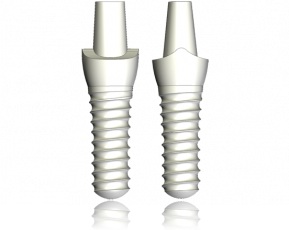
What are zirconia ceramic dental implants?
Zirconia was discovered in 1789 by the German chemist M. H. Klaproth but rediscovered only in the last decades because of its unique properties. Zirconia is a very hard material and has great strength. Because of its high bio-compatibility, it is used in medicine (auditory, finger and hip prostheses) and dentistry (posts, crown and bridge restorations, implants, implant abutments). Zirconia has similar color to teeth and is bio-compatible making it an alternative material in dentistry. Zirconia dental implants were approved by FDA in 2007 and have very limited scientific studies in United States. They have been used mostly in Europe with short term studies.
Reported advantages of ceramic implants:
- Used over 20 years in medicine, mainly for prosthetic joints, with good success.
- Bio-compatible (completely tissue-friendly); there are no allergic reactions, no sensitivity to temperature and no impact on taste.
- Gum tissue-friendly material with low plaque retention and inflammation.
- Since zirconium is white and more similar to the color of natural teeth, it may have aesthetic advantages over titanium. In rare event of gum tissue recession or shrinkage, ceramic dental implants will not reveal gray lines like in the case of titanium implants. However, it should be pointed out that similar remarkable aesthetic results can be achieved with titanium implants if they are used along with ceramic abutments and crowns.
Risks with Ziconia ‘ceramic’ implants?
- Zirconium dental implants are one-piece structures and can only work in one position, unlike a two-piece titanium dental implants that offer more flexibility in their angle through use of custom abutments. Therefore ceramic implants must be placed with extreme caution and attention to orientation and angle.
- There are reported non-integration and fractures and there are no long term studies to support their efficacy and longevity in the literature. The existing research is limited and very short term.
- Zirconia implants may be subjected to hydrolysis (a physiological process) whereby they can absorb water and potentially become more prone to fracture. Although the initial studies are favorable, more investigations are in progress.
Ceramic vs titanium dental implants?
The decision to use ceramic or titanium dental implants should be fully discussed between patient and surgeon. On one hand, many patients may request ceramic dental implants because of its ‘metal-free’ properties. As we discussed, Zirconium implants are technically a metal. On the other hand, the surgeon must follow evidence-based dentistry to make proper recommendations for long term success and safety. The following facts should be considered in the decision process:
- Titanium is regarded as the ‘gold standard’ for dental implant materials. Numerous studies have affirmed the high success and survival rates of titanium implants providing 98% + success rate. Zarconia ceramic dental implants have only about 5 years of research and limited reports in the literature. Although they show favorable preliminary results, their long term success is unknown.
- Titanium implants demonstrate high degree of integration with the bone and have excellent long term prognosis and success. The long term integration properties of zarconia remains unknown.
- Some suggest that zirconia implants have aesthetic advantage over titanium implants. However, when replacing teeth in the smile zone, most clinicians use zirconium abutments and crowns in conjunction with titanium implants, providing great aesthetic outcomes. If the gum tissue is very thin, then titanium’s gray shadow may become more visible. This potential aesthetic complication can often be avoided by proper implant site tissue development, proper placement of implant, and choice of ceramic abutments and crowns.
- Zarconia implants may not be possible to use in every patient, whether it is because of position, bone quality and quantity, and functional qualities.
Digital Planning for Precision
Digital work-up and computer-assisted implant dental implant planning allows safe and precise placement of dental implants. This in-turn eliminates complications associated with poor implant positioning and orientation. Using this approach, the entire surgical and restorative treatment plans are designed BEFORE any procedures are performed on patients. In-addition, patients can complete their treatment in less time and visits with great accuracy and remarkable results.
The benefits of digital implant dentistry include:
- Improved surgical and restorative diagnostics
- Precise positioning of dental implants
- Improved accuracy of surgical and restorative plan
- Determine appropriate implant width and length
- Eliminate risks of injuries to nerves
- Eliminate risks of injuries to adjacent teeth
- Eliminate penetration into maxillary sinus (for implants in the back of the upper jaw
- Less visits for patients
- Shorter treatment time
The Treatment Process:
- A cone beam CT scan (CBCT) is obtained for 3-dimensional image of the jaw bone and related structures:
- A digital impression of patient’s teeth and gum tissue is obtained using an intra-oral scan:
- The CBCT and the digital intra-oral scan are then combined to represent the relationship of the jaw bone to teeth and gum tissue.
- The planned restorations are then drawn digitally into the 3-dimensional model. This is essentially the digital prototype of the final prosthesis.
- Digital dental implants are then placed and adjusted until they are perfectly positioned within the confines of the restoration and the supporting bone. The implant diameter and length are precisely selected to assure an optimal and safe position in relation to surrounding nerves, sinuses, and adjacent teeth:
- Fabrication of a CAD / CAM surgical guide using the final digital work-up. The surgeon uses this surgical guide to position the implant precisely and according to the 3-dimensional work-up:
- Scanning of the implant and the its supporting gum tissue using special scan posts:
- A digital customized abutment is designed by laboratory and milled using CAD /CAM technology:
- The crown is fabricated and delivered to patient during a single visit:
Dental Implant Treatment Process
Successful and predictable replacement of your missing teeth with dental implants requires a carefully planned treatment plan coordinated by the oral surgeon and your restorative dentist. There are many factors that must be evaluated during the planning phase to make sure the results meet your expectations and provide you with long-term success.
Anesthesia
Anxiety About Dental Implant Placement:
Anxiety is not uncommon among people having dental implants or other types of oral surgery. This anxiety is mostly related to hearing others’ bad experiences with excessive pain, swelling, or complications. We resolve this in several ways. First, the use of IV sedation allows patients to nap during the surgery. This helps greatly to make them comfortable and reduce anxiety. Second, patients will be cared for by a group of friendly and professional staff members who take the time to personally connect with each patient and allay their fears and concerns. Third, the surgery is done conservatively, which minimizes or avoids swelling, pain, and complications.
Anesthesia as the solution:
The best way to manage anxiety and make sure you have the best possible experience is to opt for IV sedation. It is the recommended method and chosen by many patients. Dr. Kazemi is trained and licensed in administering office anesthesia. Its safety is attributed to continued monitoring techniques, the short acting nature of the medications, availability of emergency equipment, and, most importantly, proper training of the surgeon and the staff. Another option is local anesthesia, with or without nitrous oxide (laughing gas), but in that case, the patient is completely awake and fully aware of the procedure.
Recovery
Most patients are primarily concerned about pain and swelling after surgery, what they can eat, and when they can return to normal activities. Recovery can vary based on the following factors:
- Complexity of surgery: The more complex the surgery, the higher the chance of increased discomfort, swelling, and overall recovery.
- Surgical approach and technique: Conservative and minimally surgical approaches can minimize discomfort, possibly avoid swelling, and speed of recovery.
- Length of surgery: Typically, longer surgical procedures require more healing and recovery time.
- Post-operative instructions: You can improve your recovery by closely adhering to both pre-operative and post-operative instructions. Follow them closely and you can recover faster.
- Individual’s physiology and healing potential: This is highly variable between different individuals. Good nutrition and general state of health help to speed up your recovery.
While recovery is different for everyone, you may expect the following:
Pain:
Level and duration of pain depends on the complexity of the surgery, technique, and patient’s tolerance. Most patients experience three to four days of elevated pain, commonly managed with pain medications such as Vicodin or Percocet. As pain gradually diminishes over the next two to three days, Ibuprofen (Advil) or Acetaminophen (Tylenol) can be used. After seven to ten days, most patients no longer have pain and may stop their medications.
Swelling:
Any swelling related to surgery will maximize in 36 to 48 hours following procedure, and gradually taper over the next five to seven days. Ice helps to reduce swelling in the first 24 hours. If extractions were done in a conservative fashion, you may experience no swelling at all.
Diet:
Upon arrival home, you may have water, juices, soups, shakes, puree, and very soft food. A soft diet is recommended up to five to seven days. No hard, crispy, or spicy should be eaten during this period. The general rule is if you have to chew, it’s probably too hard. After seven days, patients may gradually return to normal food.
Activity:
Get plenty of rest on day of surgery. Some patients may feel well enough the following day to walk and go out. That’s all right, but take it easy. Avoid strenuous activities for the first two to three days. Refrain from sports, lifting, or doing anything that requires exertion. After three days, if patients feel more comfortable, they can walk, go for a gentle swim, or do very low-impact exercise., such as swimming or walking. Mild activities may cause some pain but not enough to disturb the surgery site or open the sutures.
Most patients return to work, school, or some normal activities one to two days after surgery. Most schedule their surgery on a Friday and are ready to return to wok or class by Monday. There is no problem with traveling or flying the following day, although it’s best to rest for a day or two. Of course there are always variations in overall response and recovery.
Financial
Cost of Implant Surgery:
The cost of dental implants depends on the number of implants, bone grafting needs, and your choice of anesthesia. Following an examination and discussion of treatment recommendations, our financial coordinator will present the exact cost and payment options to make it possible. Our global fees include all of the following (no hidden costs):
- Dental implant surgery
- Dental implant components
- Exposure and temporary abutment
- Surgical guide (prepared by a laboratory)
- All consultations
- All necessary X-rays
- All follow-up appointments
- Impression post for your restoring dentist ($50 value, used for implant impression)
- In-house prescriptions ($40 value)
- Home care kit
- Life-time guarantee* (*Should the implant develop any problems at any time where it requires replacement, there will be no cost to you. This is extremely rare as our implants have 99% plus success rate.
What Implants Do We Use?
We use only the most well known and researched implant companies in our office, including Zimmer, Biomet (3i), and Nobel. We do not use the lower quality and cheap dental implants, that are available in the market. These cheaper implants, which are often sold to general dentists, do not have adequate research and literature behind them and their composition and manufacturing process is unknown. We do not recommend the use of such implants as they are unpredictable and may be associated with an increased risk of failure, infection, fractures, and poor healing.
Insurance:
Dental implants and related bone grafting procedures are typically not covered by any insurance plans as they are considered elective and not medically necessary. If you have a plan with possible benefits we will be happy to submit a pre-authorization letter and form on your behalf. For this we will need to see you for examination and obtain an X-ray. Dental implants may be covered under medical insurance if teeth loss is related to a traumatic injury or pathology such as bony cysts. Contact your insurance company or call us for assistance.
Payment Options:
We have several payment options including short- and long-term plans. Those with insurance may choose to pay the surgical fees and receive reimbursement directly from their insurance company, or pay an approximate co-pay and we will submit the necessary claims. We accept all forms of credit cards, personal checks (with two forms of ID), and cash. If you need special assistance for payments, we recommend a separate consultation appointment rather than scheduling your consultation and surgery on the same day.
We offer three- to 12-month (or longer) payment plans. A short application (via phone or website) is necessary, along with a credit check for approval. Once approved, you do not have to make any payments to our office. Instead, following your procedure or treatment, you will make payments directly to the third party company. This is a NO-INTEREST program. Speak to our financial coordinator for details or contact the companies below to obtain a line of credit. We offer these programs through the following companies:
- CareCredit: 800-365-8295
- Lending Club: 800-630-1663
